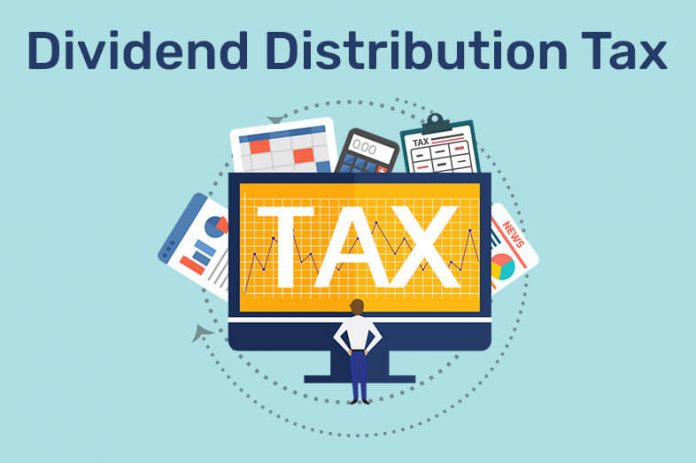This article has been written by Vishakha Bhandakkar pursuing the Diploma in Law Firm Practice: Research, Drafting, Briefing and Client Management from LawSikho. This article has been edited by Kritika Sharma (Associate, Lawsikho) and Smriti Katiyar (Associate, Lawsikho).
Table of Contents
Introduction
A dividend may be defined as a reward a company gives to its shareholders in return for their investment in the company. It is the portion of profit received by the shareholders after the accounts of the company are finalized. The reward may take the form of cash or stock. Section 2(35) of the Companies Act, 2013 (“Companies Act”) defines “dividend”, stating that it includes any ‘interim dividend’. It is given in proportion to the amount paid for each share held by the shareholders if so authorized by the Articles of Association of the company (Section 51, Companies Act). All companies except Non-Profit Organizations, i.e., companies registered under Section 8, can declare a dividend.
Sections 123 to 127, Chapter VIII, Companies Act deal with the declaration and payment of dividends. The company may pay a dividend in the manner prescribed under Section 123:
- By paying out of the profits of the current year of the company,
- by paying out of the accumulated and undistributed profits of the previous years of the company, and
- by paying out of the amount of money for the purpose of payment of dividend given by the Central or State Governments under a guarantee.
The company may declare dividend only when the following conditions are fulfilled:
- Depreciation
Depreciation is provided on all depreciable assets according to the rates and useful life of assets given under Schedule II of the Companies Act.
- Transfer to reserves
A certain proportion of profit must be transferred to reserves.
- Settling of losses of the previous years
Losses of the previous years and depreciation of the company are set off from the current year’s profit.
- Free reserves
The dividend must be declared only from free reserves.
At times, it may so happen that the company might have no profits or might not make adequate profits to pay a dividend to its shareholders. However, under the second Proviso of Section 123 (1), the company can propose to declare and pay dividends to its shareholders from the unutilized profits from the previous years, subject to certain conditions. This article discusses the conditions and protocol for the declaration and payment of dividends out of reserves under the Companies Act, 2013 and the Companies (Declaration and Payment of Dividend) Rules, 2014.
Conditions for declaration and payment of dividend out of free reserves
When a company has made no profits or has insufficient profits in a year, it may choose to declare and pay the dividend to its shareholders out of the accumulated and unutilized profits that it has earned in the previous years. Such declaration and payment of reserves are subject to the discharge of certain conditions.
Rule 3 of the Companies (Declaration and Payment of Dividend) Rules, 2014
Rule 3, Companies (Declaration and Payment of Dividend) Rules, 2014 lays down the conditions for the declaration of dividend out of free reserves:
- Rate of dividend
The rate of dividend declared shall be equal to or less than the average of the rates at which the company declared dividend in the three (3) financial years immediately preceding the current financial year.
The above condition shall not apply to a company that has not declared any dividends in three (3) immediately preceding financial years.
- Total amount of withdrawal
The total amount to be drawn from such accumulated and unutilized profits shall be equal to or less than one-tenth (1/10th) of the sum of its paid-up share capital and free reserves as it appears in the latest audited financial statement of the company.
- Utilization of amount withdrawn
The amount that is so drawn from the accumulated and unutilized profits shall be first employed to settle the losses incurred by the company in the financial year in which dividend is declared before declaring any dividend concerning equity shares.
- Balance amount of reserves:
The amount in the free reserves after such withdrawal must be equal to or more than fifteen percent (15%) of its paid-up capital as it appears in the company’s latest audited financial statement.
Who is entitled to a dividend, and how is the dividend to be paid?
Unlike equity shareholders, preference shareholders are entitled to a fixed rate of dividend and also enjoy a preference to payment of dividend. This means that in case the company is facing problems in the payment of dividends, claims of preference shareholders will take precedence over those of equity shareholders. Further, preference shareholders cannot treat preference dividends as debt and sue for recovery of debt. In the case of equity shareholders, the dividend could be any amount based on the profit.
According to Section 123 (5), dividends shall be paid only to the shareholder entitled to such payment of the dividend. The dividend shall be paid only in the form of cash and may be paid by cheque, warrant or in any electronic mode.
According to Section 123 (6), a company that has failed to comply with Section 73 and Section 74 shall be barred from declaring any dividend.
When is the interim dividend declared?
According to Section 123 (3), the Board of Directors may declare interim dividend:
- During the current financial year or any fiscal year, or
- During the period from the date of closing of the fiscal year to the date of holding the annual general meeting.
It must be noted that under Section 2 (35), it is stated that “dividend includes interim dividend”. This means that the provisions under the Companies Act that are applicable to the final dividend to that extent are also applicable to interim dividends.
Procedure for declaration and payment of interim dividend out of free reserves
- The company must issue a minimum of 7 days’ notice of the Board meeting to every director of the company at his registered address, according to Section 173.
- Board meeting must be conducted and a resolution must be passed in order to discuss, determine and approve the following matters and affairs regarding the declaration and payment of an interim dividend out of reserves:
- Approving of the financial statements and accounts,
- Recommending of the final quantum of dividend,
- Fixing of the date of the book of closure,
- Fixing of the day, date, time and venue of the Annual General Meeting (“AGM”),
- Approving the notice of the AGM,
- Authorization of the company secretary or any authorized individual for issuing the notice of the AGM.
3. Register of members and the register of share transfer or fixing of record date must now be closed.
4. Board meeting or a committee meeting must be conducted for approving the transfer or transmission of those shares of the company that were lodged with the company before the commencement of the closure of the book.
5. The company must issue a minimum of 21 days’ notice of the AGM.
6. Required proportion of profit must be transferred to the free reserves of the company.
7. Conduct the AGM and pass an ordinary resolution for the declaration and payment of dividends out of free reserves in accordance with the recommendation of the Board.
Since this is the declaration and payment of interim dividend, the approval of shareholders is not necessary. The director shall declare it in the Board meeting [Section 123 (3)].
8. The company must now prepare a statement/list of dividends in respect of each member/shareholder from the Register of members/beneficial owners. This statement/list must be prepared on the last date of closure of books or on the record date. It must contain the name and address of the shareholder, the number of shares held by the shareholder and the payable dividend.
9. A separate bank account must be opened with a scheduled bank. The bank account must be credited with the dividend payable within five (5) days of the declaration of dividend, according to Section 123 (4).
10. The company must pay the dividend within thirty (30) days from the date of declaration of dividend. For joint shareholders, a dividend must be paid to the first named shareholder. [Section 123 (5)⦐
If it is not possible to pay dividends through electronic mode, ‘payable-at-par’ warrants or cheques may be issued. Where the amount of payable dividend is more than INR one thousand and five (INR 1, 005), the payable-at-par warrants or cheques must be issued by speed post, in accordance with Regulation 12, SEBI (LODR) Regulations, 2015.
It must be noted that the company does not have to pay dividend tax, since it has been done away with by the Finance Act, 2020.
11. The company must send the forms of cancelled dividend warrants along with the MICR (Magnetic Ink Character Recognition) codes allotted by the RBI to such banks where the dividend warrants are payable at par.
12. For the amount of unpaid or unclaimed dividend, the company is required to arrange for the transfer of that amount to a particular bank account “Unpaid Dividend Account” within seven (7) days from the date of expiry of the period of thirty (30) days of declaration of dividend. [Section 124 (1)]
13. If the amount in the unpaid dividend account remains unpaid or unclaimed for a period of seven (7) years from the date of transfer to the unpaid dividend account, the company must transfer such amount to the Investor Education and Protection Fund, in accordance with the Investor Education and Protection Fund Authority (Accounting, Audit, Transfer and Refund), Rules, 2016.
Protocol for listed companies
Apart from the aforementioned procedure for declaration and payment of dividend out of reserves, listed companies are required to follow the below-mentioned protocol:
- A listed company must notify the stock exchanges where its securities are listed, at least 2 working days prior to the Board meeting, in accordance with Regulation 29, Securities and Exchange Board of India (“SEBI”) (Listing Obligations and Disclosure Requirements) (“LODR”) Regulations, 2015.
- The listed company must notify the stock exchanges where its securities are listed, of the declaration of dividend out of free reserves, within 30 minutes of closure of the Board meeting, in accordance with Regulation 30, SEBI (Listing Obligations and Disclosure Requirements), 2015.
- The listed company must notify the stock exchanges where its securities are listed, of the closure of book, minimum 7 days prior to the Board meeting, in accordance with Regulation 42, SEBI (Listing Obligations and Disclosure Requirements), 2015.
- The listed company must also issue the notice of closure of books in the local newspaper of the district in which the registered office of the company is, minimum 7 days prior to the commencement of the closure of the book.
- A listed company must declare dividend minimum 5 working days prior to the fixed record date.
- For the payment of dividend, a listed company must use an electronic mode of payment approved by the Reserve Bank of India (RBI). Such electronic modes of payment may include Electronic Clearing Services (ECS), National Electronic Fund Transfer (NEFT) etc. Payment must be made either directly or through the company’s Registrars to an Issue and Shares Transfers Agents (STA).
Conclusion
When shareholders invest money in a company, the company shares its profits out of business with the shareholders. Such a share in the profits of the company is the dividend for the shareholders. It is pertinent to note that such dividend is not a right the shareholders are entitled to. However, once the dividend is declared by the company, it constitutes debt which cannot be revoked. The shareholders become entitled to claim the dividend. Furthermore, before declaring an interim dividend, the company must ensure that its financial position permits such payment of dividend. It should be declared only if the company has made adequate profits during a particular period of the financial year and sufficient profits are expected in the remaining part of the year.
References
- https://taxguru.in/company-law/declaring-dividend-reserves-quick-recap.html
- https://taxguru.in/company-law/declaration-payment-dividend-companies-law.html
- https://www.caclubindia.com/articles/declaration-and-payment-of-dividend-under-companies-act-2013-33439.asp
- https://ajsh.in/declaration-and-payment-of-dividends/
- https://muds.co.in/types-of-preference-shares/.
- https://www.epw.in/engage/article/why-laws-are-not-enough-deal-sexual-harassment.
Students of Lawsikho courses regularly produce writing assignments and work on practical exercises as a part of their coursework and develop themselves in real-life practical skills.
LawSikho has created a telegram group for exchanging legal knowledge, referrals, and various opportunities. You can click on this link and join:https://t.me/joinchat/J_0YrBa4IBSHdpuTfQO_sA
Follow us on Instagram and subscribe to our YouTube channel for more amazing legal content.













